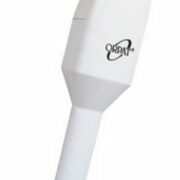
Healthy teeth and gums require proper oral hygiene. It also aids in the prevention of foul breath. The appropriate toothpaste can make a big difference in your dental health, but choosing the right one can be tricky.
In this post, we’ll show you how to pick the best toothpaste for your specific needs and tastes.
What is the finest toothpaste to buy?
The 8 strategies listed below can help people choose the best toothpaste for them.
1. Examining fluoride content
Fluoride is considered an essential element in toothpaste by the American Dental Association.
Fluoride is a mineral that helps to protect tooth enamel and prevent cavities.
Fluoride in toothpaste and drinking water is credited with a considerable reduction in dental decay, according to experts. Throughout the last couple decades Fluoride is a safe and efficient therapy, according to numerous research. As a result, most dentists and the American Dental Association (ADA) believe fluoride to be an essential element in toothpaste.
Some people, however, prefer to forego fluoride in toothpaste and water. Natural toothpaste may be a preferable alternative in this scenario because many natural formulas are fluoride-free.
2. Verifying ADA compliance
The American Dental Association (ADA) has approved some toothpastes. This indicates they meet the American Dental Association’s stringent guidelines, which state that toothpaste must:
• Have scientific evidence to indicate that it is safe and effective
• have fluoride
• Contain active components to enhance dental hygiene
• be free of flavouring compounds that lead to tooth decay, such as sugar
The ADA programme is, however, voluntary, and not all decent toothpastes brands will carry the label. The list of ADA-approved toothpaste products can be found here.

3. Examining the product label
It’s a good idea to read labels carefully. Not all toothpastes are appropriate for everyone. Some goods, for example, are not appropriate for younger children. Flavorings and sweeteners should be listed on the label by the manufacturer. People who are aware of the substances can avoid specific compounds if they are allergic to them.
Saccharin, a sweetener, calcium carbonate, and silicates, which are abrasive minerals, are common constituents.
• Sodium lauryl sulphate (SLS), a detergent that causes toothpaste to froth
• glycerol, which gives the toothpaste a gel-like consistency
People who experience canker sores or mouth ulcers frequently should avoid products that include SLS, according to some research Trusted Source.
4. Making a decision based on specific dental issues
Individuals with dental issues should select toothpaste that is tailored to their unique requirements. Some people may require desensitizing toothpastes, for example. Desensitizing toothpasts contains ingredients like potassium nitrate that suppress pain signals by blocking sections of the teeth.
5. Deciding whether or not to use whitening toothpaste
Teeth whitening toothpaste might aid in the removal of stains.
Many individuals want a brighter smile, and whitening toothpaste is a simple and efficient way to get that. Abrasive chemicals in these products polish the teeth or remove stains from the surface. People with sensitive teeth should avoid whitening toothpastes containing chemicals, as these might exacerbate sensitivity. A dentist can advise you on the best whitening alternatives for sensitive teeth.
6. Obtaining a prescription toothpastes for teeth that are extremely sensitive
Brushing sensitive teeth can be a painful experience. Ice cream and hot coffee are two foods and beverages that can be difficult to consume. Special toothpastes can help with sensitive teeth symptoms, and over-the-counter (OTC) choices are usually beneficial. However, OTC medications may not provide enough relief for some people. A dentist may be able to prescribe a stronger product if this is the case.
7. Monitoring RDA levels
Abrasive agents are used in toothpastes to clean and whiten teeth. The abrasiveness of a paste is measured by its relative dentin abrasively (RDA), which varies from product to product. Under 250 RDA, products should be safe and effective. An RDA of 250 or less is required for all ADA-approved toothpaste. Toothpaste with a higher RDA can harm your teeth. If in doubt, follow the ADA’s guidelines or contact the manufacturer.
8. Take into account tartar control
Before and after brushing, a film of germs known as plaque accumulates on the teeth. Tartar is formed when plaque hardens. Tartar is a difficult substance to remove and can cause gum disease. Tartar deposits can be avoided with good oral hygiene and regular dental cleanings. Patients with tartar on their teeth should visit their dentist. They should use a tartar-control toothpaste as well. This will contain substances that prevent tartar build-up, such as pyrophosphates and zinc citrate.





































